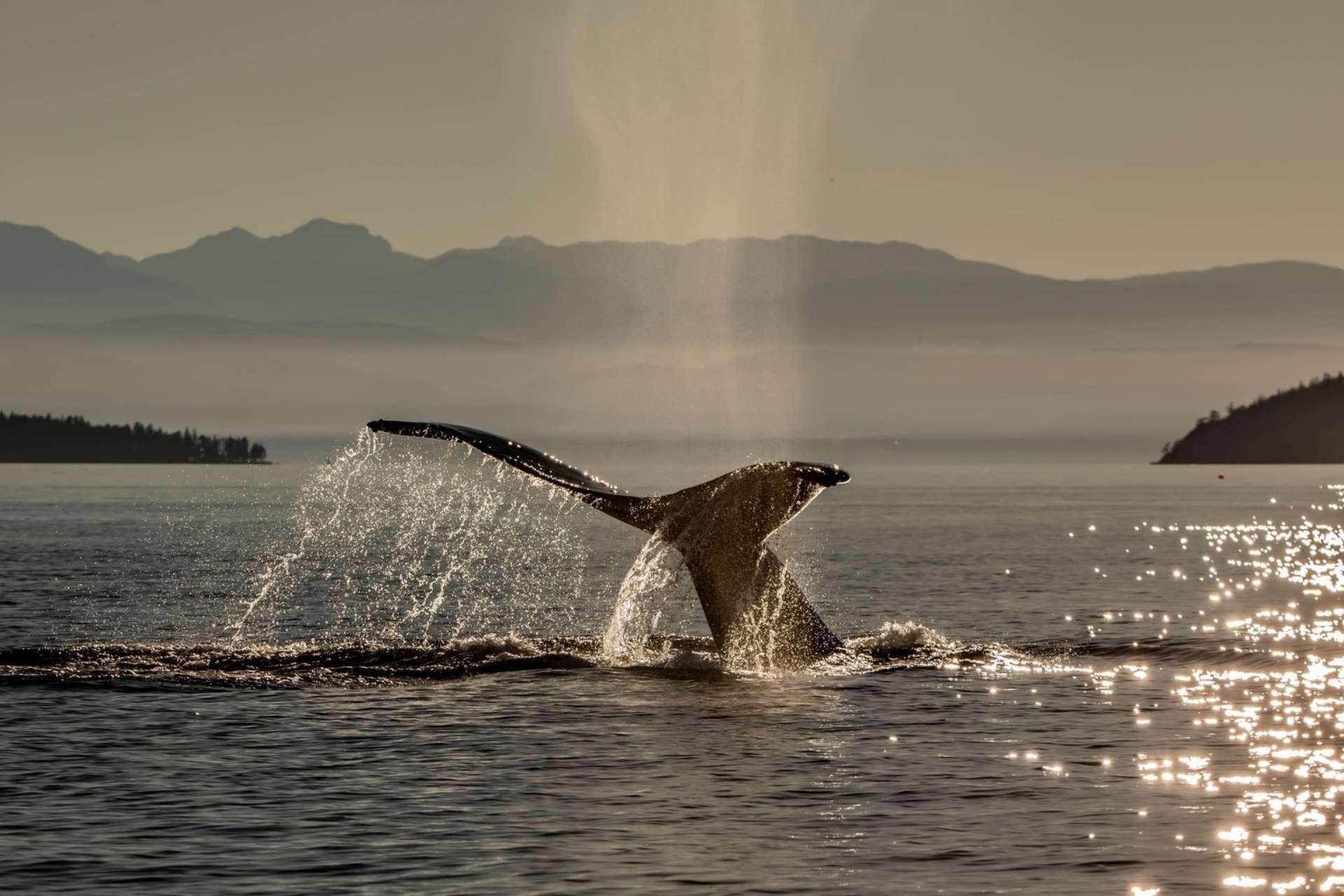The last two months have been devastating ones for British Columbia’s humpback whales. Three individuals—Midnight, Wisp, and Polyphemus—have been found dead, all believed to be victims of collisions with vessels in our waters. Each of these whales had a name, a story, and a place in the hearts of researchers and locals alike. They were not anonymous; they were neighbours.
Here on the Sunshine Coast, many of us have witnessed the wonder of these animals firsthand. Gray whales feed right beside the Pointhouse. Pacific white-sided dolphins sometimes gather in our bay for entire days, chattering and feeding and thrilling guests with their presence. To lose any of them feels like losing family.
After decades of recovery from commercial whaling, humpback populations in BC have made a remarkable comeback. But with their return comes increased risk: warmer waters, busier coastlines, and, especially, vessel strikes. Many people assume humpbacks are most plentiful in summer—but fall is actually when their numbers peak in our region, just before they migrate to Hawaii, Mexico, or Central America.
Recent incidents have involved ferries, tour boats, and private vessels alike. Some whales died immediately; some suffered deep injuries that left their fate uncertain. Researchers emphasize that while necropsies will take months to confirm each cause of death, vessel strikes remain one of the primary threats to these recovering populations.
What’s most important—and most hopeful—is that these deaths are not inevitable. There is so much we can do.
How We Can Help Protect Them
-
Slow down in known whale habitats, especially in fall when numbers are highest.
-
Give whales space—always at least 100 metres for most whales in Salish Sea; 400m for all killer whales for recreational boaters. More is always better.
-
Keep watch for blows, backs, and birds that may signal feeding activity.
-
Avoid whale-watching boats that approach too closely or too aggressively.
-
Learn more through the free Whale Safe Boating Course, packed with insights every coastal resident and visitor should know.
Watch From Shore – A Safe, Beautiful Alternative
For those who love to see whales but want to reduce pressure on them, one of the most magical and responsible ways to experience marine life is from land. Here on the Lower Sunshine Coast, we’re fortunate to have a dedicated community of spotters who share real-time sightings through the public group facebook page Sunshine Coast Whale & Dolphin Sightings .
This local group regularly posts where whales and dolphins are traveling close to shore, allowing people to experience the thrill of a blow, breach, or dolphin pod without adding vessels to already busy waters. It’s an easy, impactful way to protect these animals while still enjoying their presence.
Sometimes the most respectful encounter is the one that happens from a quiet lookout, a beach, or even your own window—no wake, no noise, and no risk.
Moving Forward Together
Each time we act with intention on the water—or choose to watch from shore—we help ensure that these extraordinary beings can live, feed, migrate, and raise their young in safety. Sharing our coast with them is a privilege. Helping to protect them is the least we can do.


